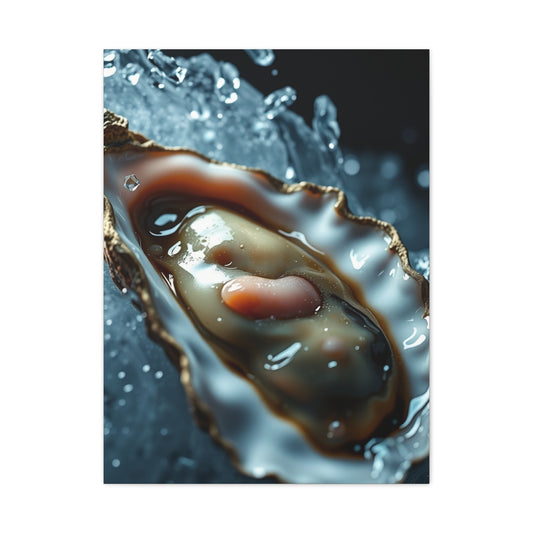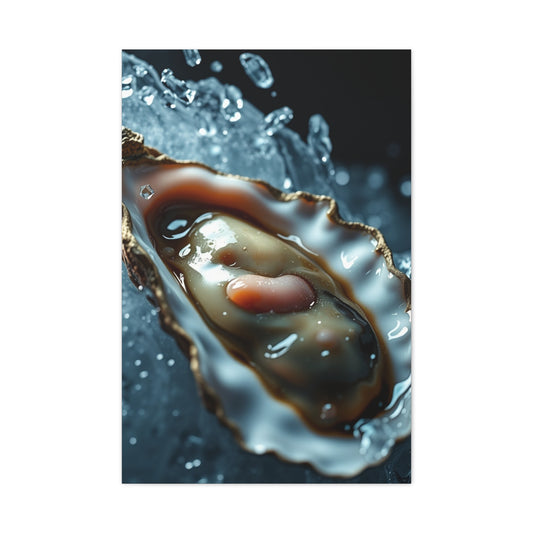Floating frames have become a beloved choice for artists and collectors who want artwork to feel like it’s suspended in space, creating a sense of depth and presence that traditional framing can’t match. When you elevate your pieces with floating frames, you give them a visual importance that resonates in any setting. The way the frame seems to “float” around the edges highlights the artwork itself, subtly drawing the eye in and offering a sophisticated finish that suggests the piece is too valuable to be hidden beneath glass or heavy molding. Midway through your creative journey, take a look at premium photo print services that allow you to reimagine your personal scenes with remarkable clarity and texture. This effect heightens the perception of the work, whether it’s a print of an abstract composition, a photograph, or a cherished family portrait. One way to broaden your collection before framing is to explore unique print services that produce rich, personalized images you will be proud to showcase. As you prepare to frame these pieces, the anticipation of seeing them enveloped in a floating frame adds a layer of excitement, inspiring you to consider how different frame materials and finishes will complement your interior environment.
Enhancing Visual Depth With Intelligent Framing
A key reason artists and collectors prefer floating frames is the sense of visual depth they create. Because the artwork sits between two layers, or seemingly “floats” within the frame, there is a subtle shadow effect that changes as light moves through the room. This dynamic interplay between artwork and frame elevates the entire piece, encouraging viewers to engage more fully with what they see. Imagine a richly hued masterwork depicting a cinematic scene, set against a minimalist backdrop; the right frame intensifies its presence, urging a viewer to step closer. Consider how a dramatic and emotive piece like the film aesthete masterpiece becomes even more enthralling when adorned with a frame that lets it breathe, encouraging reflection and conversation. Integrating a floating frame in this context doesn’t merely protect it—it accentuates its essence. The act of framing becomes a part of the artistic interpretation, where you curate how light and shadow dance at the intersection of image and environment.
Sophistication In Every Room
Floating frames are not just about artistic presentation; they’re about harmonizing your artwork with your surroundings in a way that speaks to refined taste. Whether you’re decorating a cozy reading nook or a formal gathering space, the frame’s clean profile ensures your piece feels integral to the room. A serene seascape or abstract composition, placed within a floating frame, transforms from mere decoration into a focal point that anchors the space with elegance. To collect pieces that evoke such a tranquil spirit, start by exploring works like this ethereal oceanic tranquility piece that embodies peaceful expanses and gentle horizons. If your collection includes tranquil or atmospheric imagery, pairing those pieces with frames that complement their mood deepens their emotional resonance. For instance, a tranquil maritime scene can serve as a visual anchor in a restful environment, setting a tone of calm for anyone who enters. Once framed, such images invite lingering gazes and thoughtful pauses, weaving a narrative that unfolds quietly in your space.
Personalizing Children’s Spaces
When it comes to decorating spaces for children, floating frames offer a delightful blend of protection and sophistication. Unlike typical framing methods that may feel too heavy or formal, floating frames keep playful prints crisp and vibrant while giving them a grown‑up polish you’ll appreciate as much as your child does. These frames allow for easy rotation of seasonal or themed prints, making them ideal for growth and change as your child’s interests evolve. Bringing together joyful illustrations and meaningful imagery in a framed collection can inspire creativity and comfort in your child’s everyday world. Before framing, discover charming options from selections like this children’s favorite pieces collection that celebrate wonder and curiosity. If you’ve collected prints that speak to adventure or imagination, incorporating them into floating frames offers an elevated finish that respects their whimsy without compromising on quality. As you curate these prints, think about how each frame’s color or wood tone will engage with your room’s palette, ensuring a cohesive look that delights both kids and adults alike.
Celebrating Connections Through Art
Art can capture emotional bonds and meaningful moments, turning memories into visual celebrations. Floating frames are a beautiful way to honor these narratives, giving prominence to pieces that reflect friendship, family, or shared experience. Whether you choose to feature a series of images that chronicle a journey or a singular piece that symbolizes a treasured bond, the frame itself becomes part of the story, enhancing emotional resonance. If you are looking to infuse your space with imagery that speaks to connection and joy, consider drawing inspiration from creative compilations like these friendship photo ideas that celebrate meaningful relationships. The sense of suspension that floating frames evoke reinforces the idea that these memories are not static, but living, shifting with light and perspective. After selecting those images, framing them in a style that complements your home’s design aesthetic adds another layer of intention, making every glance at your display a reminder of the bonds you cherish.
Seasonal Flair And Festive Expression
Seasonal themes can invigorate interiors with bursts of color, sentiment, and festivity, and floating frames are a stellar way to bring those themes into focus. During holidays or special occasions, thoughtfully framed prints can set the tone for celebration and warmth. The beauty of floating frames lies in their ability to elevate thematic pieces without overwhelming a space, acting as curated accents that amplify the mood. For winter celebrations, bright spring motifs, or autumnal compositions, the frame’s fine edge creates a polished presence that honors each season’s distinctive spirit. A striking example is found in festive collections that inspire home décor with rich hues and thematic design cues like this festive arbor grandeur piece. When selecting pieces that resonate with holiday cheer or seasonal joy, think about imagery that evokes warmth or nostalgia. Once enhanced with a floating frame, such compositions feel intentional and uplifting, inviting admiration and conversation throughout your celebrations.
Urban Inspirations For Modern Interiors
Integrating art that reflects metropolitan energy can bring an urban edge to your décor, and floating frames help balance that vigor with refined presentation. City skylines and architectural impressions carry a dynamic visual rhythm that benefits from the depth and clarity floating frames provide. To explore images that capture distinctive metropolitan views and design cues, you might browse selections like this metropolitan skyline collection. Whether your style leans toward minimalist chic or bold contemporary statements, these frames offer a versatile finish that complements each aesthetic. Graphic lines and vibrant lights captured in urban imagery gain added dimension when nestled within a frame that allows them to hover subtly before the surrounding space. Pairing these pieces with frames that match your décor’s tones amplifies architectural themes, turning a simple print into a statement piece that embodies the energy and personality of your favorite cities.
Fresh Perspectives For Every Season
Art doesn’t have to remain static; it can shift with the seasons, reflecting new moods and motifs throughout the year. Floating frames enable easy interchangeability, so you can rotate pieces that respond to changes in light, weather, and your own tastes. This approach keeps spaces feeling alive and responsive, preventing décor fatigue and inviting fresh energy into your environment. If you need fresh inspiration for seasonal displays, explore ideas that help you craft meaningful compositions like these creative seasonal card ideas. Seasonal prints that evoke spring’s renewal, summer’s brightness, autumn’s warmth, or winter’s hush can each take their turn in the spotlight, and the consistent presence of refined frames ensures that transitions feel cohesive and intentional. As you select seasonal imagery to frame, consider how the interplay of texture, hue, and light will evolve through the year, and choose frames that enhance rather than compete with those changing visuals.
Integrating Everyday Spaces With Intention
Spaces like kitchens, hallways, and bedrooms often serve multiple functions, yet they are frequently overlooked in art placement. Floating frames invite you to consider how meaningful imagery can enhance these everyday areas, lending them nuance and personality. A playful or evocative print can lift a routine space into something more thoughtful or expressive. Integrating imagery with themes that reflect your daily rituals and joys draws attention to these moments, giving them a sense of significance beyond utility. For insight into blending creativity with daily life, explore inventive concepts such as these creative kitchen design ideas that bring functional areas to life. Framed thoughtfully, these images serve as visual anchors that enrich the ambiance, creating a link between practical needs and aesthetic pleasure. When you frame art for everyday spaces, think about how color, scale, and subject matter will interact with the room’s activities and energy throughout the day.
Timeless Finishes For Classic And Contemporary Pieces
Floating frames suit a wide range of artistic styles, from classical compositions to modern abstractions. This adaptability makes them a go‑to choice for collectors seeking a unifying element across varied pieces, ensuring that each item feels part of a curated collection rather than a random assortment. Find design inspiration in selections that embrace refinement and elegance, like ideas for incorporating elegant silver finishes that resonate with both classic and contemporary sensibilities. The simplicity of the frame allows the artwork to express itself without distraction, giving equal weight to each piece irrespective of genre. Whether you favor serene landscapes, dynamic abstracts, or evocative portraits, the right frame can accentuate your collection’s unique voice. As you consider these pieces, think about how consistent framing creates visual harmony, guiding the viewer from one work to the next with effortless flow and sophistication.
Celebrating Seasonal Cheer With Intent
During festive times, art and décor become powerful tools for expressing joy and hospitality. Floating frames allow you to feature celebratory imagery in a way that is both polished and spirited, whether it’s vibrant seasonal pieces or subtle designs that capture the essence of the occasion. For ideas that elevate seasonal ambiance with thoughtful design, explore suggestions like these festive decoration inspirations. These frames help strike a balance between festivity and timelessness, ensuring your décor feels joyful without being fleeting or overly thematic. When selecting festive imagery, look for pieces that embody warmth, community, or tradition, and bring them to life with frames that complement your décor and deepen the celebratory atmosphere. Once framed, such imagery becomes a meaningful part of your seasonal expression, inviting warmth and connection into every corner of your environment.
Optimizing Kitchen Flow With Framing Choices
Floating frames are a subtle yet powerful way to enhance the sense of organization and flow in a kitchen or food-preparation area. They allow artwork or prints to complement functional spaces without overwhelming them, creating a balance between aesthetic appeal and practical design. For those seeking inspiration in designing spaces that harmonize aesthetics with efficiency, exploring the foundations of the kitchen work triangle provides insightful principles that complement thoughtful art placement. The perception of depth created by floating frames makes the space feel more open and inviting, even when incorporating bold colors or textures. Beyond purely decorative purposes, strategically chosen framed imagery can guide the eye along functional zones, reinforcing the natural workflow in your kitchen. Integrating these concepts ensures that your chosen pieces enhance, rather than compete with, the room’s natural rhythm and usability, demonstrating that elegance and functionality can coexist seamlessly.
U-Shaped Kitchen Elegance And Visual Harmony
Kitchens with U-shaped layouts benefit from floating frames by creating visual interest in corners or above countertops, where traditional display methods might feel constrained. This framing method allows you to suspend imagery slightly above its base, providing a floating sensation that complements the geometric symmetry of a U-shaped design. For guidance on maximizing both style and efficiency in this type of layout, check out the foundations of the U-shaped kitchen efficiency that highlight how design choices support both aesthetic and functional considerations. By framing elements that echo the kitchen’s inherent structure, you create continuity between form and decoration. Bold or subtle artwork can elevate the perception of space, especially when arranged to emphasize symmetry and visual flow. When the art aligns with the space’s architecture, it feels intentional, cohesive, and polished, transforming a utilitarian area into a visually dynamic environment.
Refreshing Living Spaces With Seasonal Imagery
A room’s mood can be dramatically transformed by updating its focal points with fresh, vibrant imagery, and floating frames amplify that effect by letting each piece breathe. Living areas benefit from pieces that reflect current seasons, holidays, or personal milestones, with the frame adding dimension and prominence. The shadow and depth effects produced by floating frames make colors appear richer and more dynamic, which can rejuvenate any interior environment. To explore ideas that inspire vibrant updates for new seasons, consult fresh start inspiring living room paint ideas. Framed artwork can serve as an anchor point for color palettes, complementing furnishings while providing a visual reset that elevates the space. The combination of thoughtfully chosen imagery and floating frames creates an environment that feels both curated and lively, inviting residents and guests to engage more deeply with the space.
Celebrating Social Bonds Through Art
Floating frames provide an excellent way to highlight moments of social connection and friendship, elevating images and graphics into meaningful décor. When hosting or commemorating shared experiences, framed pieces help articulate relationships visually, transforming everyday spaces into storytelling galleries. The slight elevation effect ensures that these images stand out, allowing their emotional content to resonate more effectively. For event-specific inspiration, consider designs and setups from friendship day party decoration ideas that blend celebratory charm with personal significance. Incorporating framed versions of these motifs in your home provides an ongoing reminder of joyous occasions, enhancing both communal spaces and intimate corners with sentiment and style. Each frame serves as a subtle narrative device, making the abstract concept of friendship tangible through design.
Embracing Natural Beauty With Floral Imagery
Artistic depictions of nature, especially delicate blossoms, benefit immensely from floating frames because of the visual depth they provide. Cherry blossoms, in particular, lend themselves to this treatment, allowing the flowers to seemingly hover within the frame and engage the viewer from multiple perspectives. This floating effect complements spaces that prioritize tranquility, bringing the serenity of outdoor environments indoors. For curated inspiration, browse collections such as cherry blossom imagery that highlight seasonal elegance and poetic beauty. The addition of floating frames ensures that each piece is displayed with intentionality, emphasizing contours, hues, and composition. This combination invites a sense of calm and mindfulness, reinforcing the transformative power of thoughtful placement in interior design.
Enhancing Event Invitations With Sophistication
Floating frames are not limited to permanent installations—they can also elevate displays related to events such as weddings or formal gatherings. Showcasing stylish invitations or thematic graphics in frames adds a sense of ceremony and refinement, transforming simple printed materials into focal pieces of décor. The effect is both visual and psychological: the viewer perceives the content as special and worthy of attention. For guidance on how to present such pieces elegantly, see insights from black tie to casual chic wedding etiquette. Framing invitations or event-centric graphics in this manner encourages engagement, appreciation, and a sense of occasion, while maintaining a clean, modern aesthetic. This approach demonstrates how floating frames can transcend conventional display, blending practicality with decorative appeal.
Transforming Dining Areas With Statement Pieces
In dining spaces, large-scale or statement artwork can anchor the room, offering a visual narrative that enhances both everyday meals and special gatherings. Floating frames are ideal for these scenarios because they add dimension without heavy profiles that might feel imposing. The frame’s ability to create shadow and separation draws focus to the image, reinforcing its importance within the space. For tips on selecting complementary décor, explore resources from bland to grand dining selections. Combining thoughtful imagery with floating frames ensures that dining areas feel considered, intentional, and inviting, creating a balance between aesthetic appeal and functional comfort. The effect is a space that encourages interaction, reflection, and enjoyment through visual storytelling.
Infusing Interiors With Bold Colors
Floating frames can make even the most audacious colors and patterns appear sophisticated by giving them a clean boundary and subtle depth. For instance, vibrant magenta tones or other bold shades are visually amplified by the frame’s ability to separate the image from its surroundings while highlighting its intensity. This approach allows for playful experimentation with daring hues without overwhelming the room. To explore ideas for incorporating strong color accents thoughtfully, see recommendations on fuchsia, magenta bold shades. Framing these bold elements in a floating style ensures that they capture attention with elegance, adding vibrancy without compromising harmony. This combination of color and structure encourages a lively, expressive interior that feels dynamic yet intentional.
Holiday Spirit Through Seasonal Displays
Floating frames also lend themselves beautifully to holiday-specific themes, making festive imagery feel elevated and intentional. The depth provided by the frame enhances the sense of warmth and celebration, allowing seasonal motifs to become prominent features within a room. Whether highlighting twinkling lights, snowy scenes, or other holiday-inspired designs, these frames help transform ephemeral decorations into lasting visual experiences. Browse collections such as Christmas-inspired displays to identify prints that resonate with your seasonal vision. Properly framed, these images create a layered, immersive experience that bridges the gap between temporary décor and year-round aesthetic appeal, making every holiday feel special.
Exploring Digital Innovation With Contemporary Prints
Digital artistry and pixel-based designs benefit uniquely from floating frames, which provide structure while emphasizing the depth and complexity of contemporary works. Floating frames allow each pixel, gradient, and texture to stand out, creating a sense of movement and engagement as viewers move around the piece. For inspiration, explore works such as the ethereal pixel masterpiece, which exemplifies how technology and artistry converge. The frames enhance both technical precision and aesthetic impact, transforming digital concepts into tactile, gallery-worthy experiences. This interplay between modern digital art and traditional display methods encourages thoughtful engagement, showcasing the possibilities of framed creativity in the modern home.
Creating Continuity Across Spaces
One of the subtle benefits of floating frames is the continuity they offer across multiple rooms or collections. By standardizing framing styles, you can create visual cohesion that unites diverse artworks into a curated narrative. This effect enhances the sense of intentionality, guiding viewers through an evolving visual story as they move from space to space. Each frame acts as a unifying agent, providing consistency while allowing individual pieces to retain their unique identity. Thoughtful application of floating frames ensures that interiors feel harmonious, engaging, and reflective of personal taste, whether in a gallery, private collection, or residential setting.
Celebrating Pet Portraits With Style
Floating frames offer a sophisticated way to elevate pet-themed imagery, transforming everyday photographs into distinguished décor. By creating a sense of depth and separation, these frames ensure that even playful or whimsical subjects appear refined and intentional. Highlighting the personality and charm of animals through a floating presentation enhances emotional engagement, encouraging viewers to pause and appreciate the nuances of expression and detail. For inspiration on curated collections, explore pieces like the exquisite Fido fine art print, which showcases the charm and presence of beloved pets artistically. Floating frames emphasize each feature, allowing the subject to command attention without overwhelming surrounding décor. The result is a display that blends sentimentality with sophistication, turning simple images into meaningful focal points that enrich any room.
Elegant Dining Inspirations With Floating Frames
Dining spaces are a perfect canvas for artistic exploration, and floating frames allow images to enhance elegance without clutter. A minimalist dining table paired with curated imagery draws the eye and complements meal settings, creating a cohesive visual environment. To cultivate inspiration for stylish table settings and refined aesthetics, consider insights from elegant simplicity white dining table inspirations. The subtle shadowing of floating frames lends dimension to prints, reinforcing their importance in a functional space while maintaining an understated charm. When combined with floating frames, these inspirations demonstrate how thoughtful presentation can elevate everyday routines into curated experiences, marrying form and function with a seamless blend of style and practicality.
Capturing Floral Essence With Depth
Floral imagery benefits immensely from floating frames due to the added depth and separation they provide. Petals, stems, and natural textures appear more dynamic as they hover within the frame, creating a sense of realism and movement. Highlighting botanical details in this manner transforms prints into immersive visual experiences, encouraging contemplation and appreciation. For carefully selected floral designs that embody elegance and vitality, examine pieces like the exquisite flora impression. Floating frames give these compositions prominence, allowing them to serve as focal points in living areas, bedrooms, or entryways. This approach ensures that natural beauty is honored while integrating seamlessly into curated interior design schemes.
Celebrating Feline Elegance
Art featuring cats often captures a blend of grace, mystery, and charm, and floating frames enhance these qualities by emphasizing contours and subtle expressions. The frame’s elevated edges allow light to interact with the artwork in dynamic ways, drawing attention to nuanced details and creating a sense of presence. For collectors or enthusiasts seeking distinctive feline-focused imagery, consider works such as the feline grace masterpiece. Floating frames elevate these pieces beyond mere decoration, turning them into focal points that convey personality, elegance, and sophistication. By situating such works thoughtfully within interiors, the space gains a layer of narrative depth that engages viewers emotionally and visually.
Transforming Entryways Into Signature Statements
Entryways serve as first impressions of any home, and thoughtfully framed imagery can set the tone for the entire interior. Floating frames allow prints to occupy space without overwhelming it, creating balance while drawing attention to design details. This approach helps entryways feel curated, intentional, and inviting. To explore creative ideas for making entrances both functional and stylish, refer to fresh perspectives on transforming entryway spaces. Utilizing floating frames in this context enhances depth and clarity, ensuring that each piece harmonizes with lighting, furnishings, and architectural details. The result is a compelling and welcoming environment that establishes narrative continuity for visitors from the moment they step inside.
Seasonal And Festive Themes
Festive imagery gains enhanced impact when presented in floating frames. The sense of suspension adds prominence to seasonal compositions, allowing colors, motifs, and thematic details to shine. Framed seasonal prints provide both visual delight and emotional resonance, creating environments that feel lively, celebratory, and thoughtfully designed. For inspiration in integrating festive elements with sophisticated presentation, explore collections such as festive cattle reverie displays. Floating frames ensure that these seasonal pieces maintain a sense of elegance and permanence, elevating temporary décor into focal points that contribute meaningfully to interior storytelling.
Showcasing Figurative Art
Figurative imagery benefits from the dimensionality provided by floating frames, which emphasize human or abstract forms without overshadowing them. By giving the artwork space to “breathe,” frames enhance the perception of movement, posture, and gesture, making compositions feel lively and expressive. Works like the figural essence gallery piece exemplify the impact of floating frames on figurative subjects. Proper framing allows subtle details to emerge, encouraging viewers to engage more deeply with the artistic narrative. This method is especially effective in galleries, personal collections, or areas where focus and contemplation are encouraged.
Automotive Imagery With Contemporary Flair
Automotive-themed imagery, including iconic cars or dynamic racing scenes, can serve as bold statements when elevated with floating frames. The frames create visual separation, allowing details like curves, textures, and reflections to command attention. For collectors or enthusiasts, curated collections such as classic and modern car displays inspire, combining visual interest with sophisticated presentation. Floating frames enhance the perception of motion and engineering elegance, making the pieces both aesthetic and aspirational. This approach encourages a balance of excitement and refinement, bridging the gap between hobbyist admiration and interior sophistication.
Nature And Landscape Narratives
Landscapes and pastoral scenes gain narrative depth through floating frames, which highlight details in textures, light, and perspective. Prints depicting tranquil rivers, forests, or countryside vistas feel immersive, drawing the viewer into the scene with enhanced realism. A piece like Fisherman in a Stream by George Inness demonstrates how framing can underscore naturalistic beauty, allowing each brushstroke, gradient, and composition element to resonate fully. Floating frames transform these images from simple scenic depictions into meditative focal points, inviting extended engagement and appreciation within interior spaces.
Empowering Youthful Spaces
Art in bedrooms or study areas for younger residents can blend inspiration with aesthetic quality when framed thoughtfully. Floating frames provide a sense of elevation, making imagery more engaging and encouraging creativity. For example, designs intended to stimulate imagination or promote comfort in personal spaces can be enhanced with techniques that elevate visual impact. Check out girl power bedroom design inspirations for curated ideas that balance empowerment and style. Integrating floating frames ensures that vibrant, motivational imagery maintains sophistication while fostering a nurturing and stimulating environment.
Seasonal Rotation And Curated Display
Floating frames support seasonal rotation, allowing you to refresh interiors with thematic or temporal pieces without compromising cohesion. By maintaining a consistent framing style, seasonal updates feel intentional rather than disruptive. This approach encourages engagement, curiosity, and appreciation of evolving aesthetics within a space. Combining seasonal rotation with floating frames ensures that each piece, whether celebratory, tranquil, or motivational, receives prominence and respect. Properly curated displays make interiors feel dynamic and responsive, creating environments that are visually stimulating yet harmonious.
Cohesion Across Collections
Finally, floating frames allow disparate pieces—ranging from abstract to realistic, bold to subtle—to coexist harmoniously. By providing a unifying element, frames ensure visual continuity while allowing each piece to retain its unique identity. This principle applies across bedrooms, living areas, dining rooms, or gallery-style installations. Carefully selected floating frames create a cohesive narrative, guiding the eye from one artwork to the next with intentional flow. Whether highlighting pets, landscapes, floral compositions, or automotive imagery, a framing strategy turns a collection into a curated experience that resonates with viewers and elevates interior design.
Conclusion:
Floating frames represent more than a mere decorative choice; they are a transformative tool that reshapes how we perceive and interact with art. By creating a sense of depth, suspension, and prominence, these frames elevate every image, photograph, and design element from a static object into an immersive visual experience. Unlike conventional framing techniques, floating frames provide a subtle separation between the artwork and its surroundings, allowing light, shadow, and perspective to interact dynamically with each piece. This interplay not only enhances the visual appeal but also adds a layer of sophistication and intentionality to any space, whether it is a personal living area, a shared social environment, or a professional setting.
One of the most compelling aspects of floating frames is their versatility. They harmonize effortlessly with a wide range of artistic styles, from classical landscapes and abstract compositions to contemporary digital designs and whimsical pet portraits. This adaptability allows homeowners and collectors to maintain a cohesive aesthetic across diverse collections, uniting seemingly disparate pieces through consistent framing techniques. By providing a neutral yet elegant border, floating frames allow the content of the artwork to shine while offering a polished and professional presentation. This quality makes them ideal for spaces where visual harmony and continuity are paramount, such as living rooms, dining areas, entryways, and even kitchens.
Beyond their aesthetic value, floating frames serve a functional purpose by protecting artwork while simultaneously enhancing its impact. The physical elevation they provide reduces direct contact with surfaces, minimizing potential damage and preserving the integrity of each piece. This practical benefit ensures that the artwork maintains its vibrancy and detail over time, allowing for long-term enjoyment and appreciation. In addition, the subtle shadowing effect created by the frame introduces depth that draws viewers into the composition, encouraging closer observation and emotional engagement. The result is a presentation that feels dynamic and alive, transforming static imagery into a storytelling device that captivates the observer.
Floating frames also excel in personalizing interiors and expressing individuality. By framing family portraits, cherished memories, or curated collections, individuals can create environments that reflect their tastes, values, and experiences. These frames make it possible to highlight emotionally significant imagery, turning everyday spaces into curated galleries that celebrate meaningful moments. Seasonal or thematic rotations are also enhanced by floating frames, as they allow for easy updates without compromising the overall cohesion of a room. The flexibility to refresh displays ensures that interiors remain lively and responsive to changing moods, celebrations, or personal milestones.
The psychological impact of floating frames should not be underestimated. Art displayed in such a way encourages mindfulness and intentional viewing, creating environments that inspire reflection, creativity, and engagement. Spaces feel more sophisticated and thoughtfully designed, whether the artwork showcases serene landscapes, vibrant floral compositions, dynamic urban scenes, or playful animal imagery. The ability of these frames to emphasize light, shadow, and spatial relationships enhances the sensory experience, making interiors feel expansive, inviting, and immersive. This elevated experience extends beyond mere decoration, influencing mood, atmosphere, and perception of the space as a whole.
In social and communal settings, floating frames facilitate conversation and connection. By providing a refined presentation for photographs, illustrations, or themed imagery, they draw attention to shared experiences, achievements, or creative endeavors. The prominence given to each piece encourages viewers to pause, appreciate, and discuss, transforming art into a catalyst for dialogue and relationship-building. This quality is particularly effective in spaces designed for entertaining, communal gatherings, or professional showcases, where visual impact and engagement are key. The frame’s understated elegance ensures that the focus remains on the artwork while simultaneously enhancing the overall ambiance of the space.
Another significant advantage of floating frames is their compatibility with various interior design styles. Whether a space embraces minimalism, classic elegance, modern chic, or eclectic vibrancy, floating frames provide a unifying element that integrates seamlessly with surrounding décor. Their clean, unobtrusive profiles allow for flexibility in placement and styling, ensuring that each piece complements rather than competes with its environment. This adaptability makes floating frames a reliable choice for evolving spaces, where design preferences, color schemes, or furnishings may change over time. They offer both consistency and versatility, allowing interiors to evolve without losing visual coherence or sophistication.
Ultimately, the use of floating frames represents a commitment to intentional living and curated aesthetics. They invite viewers to engage with art on a deeper level, transforming ordinary walls and spaces into immersive experiences that communicate personality, taste, and creativity. Whether highlighting cherished memories, seasonal motifs, bold color statements, or serene landscapes, floating frames amplify the presence and impact of each piece. Their combination of elegance, flexibility, and depth ensures that every space benefits from a refined, polished, and immersive visual environment. By incorporating floating frames, individuals elevate not only their art but also the overall quality, ambiance, and experience of their interiors, making them a timeless and indispensable choice for thoughtful design.




























